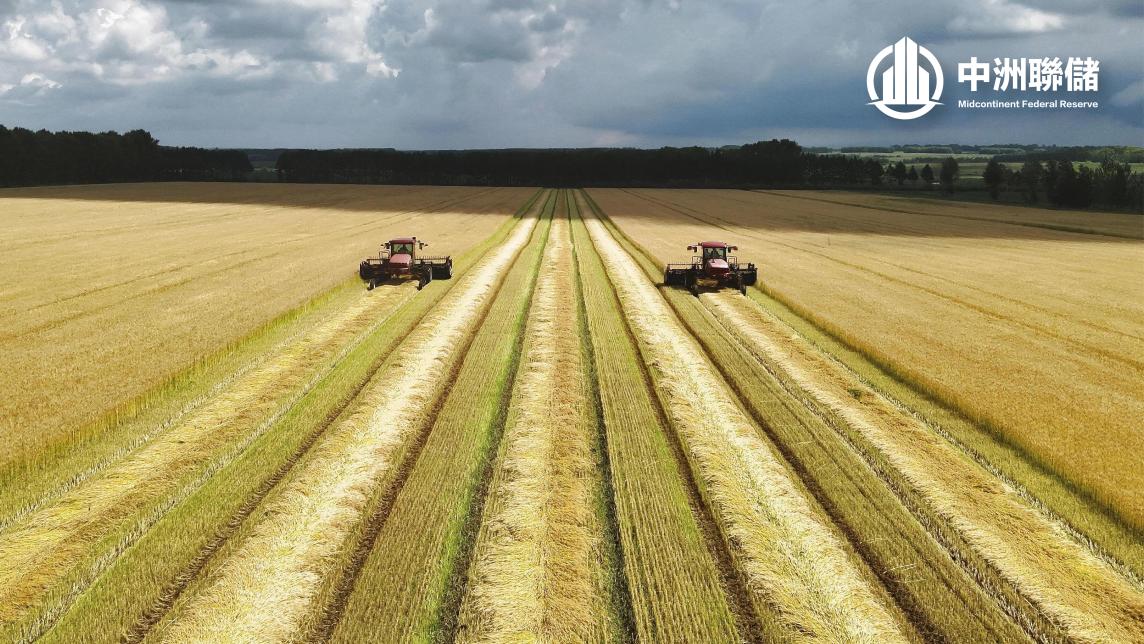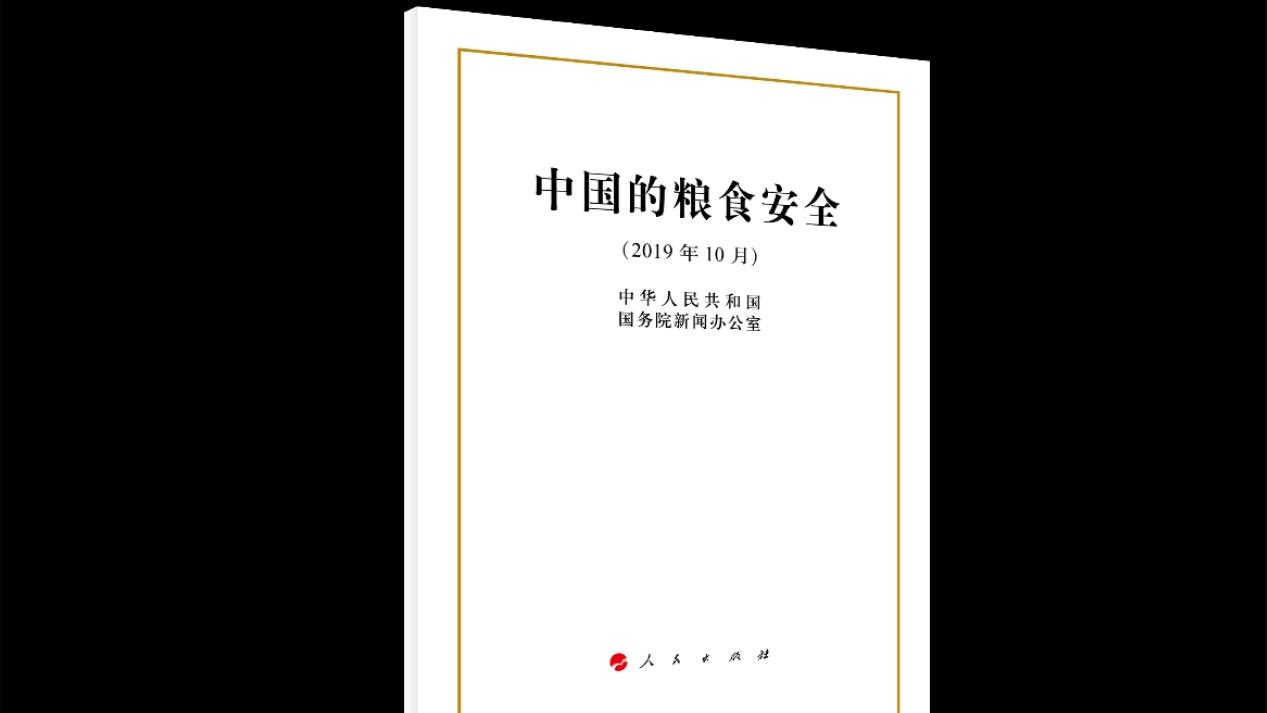 2025-04-05
HaiPress
2025-04-05
HaiPress
Food security is a critical component of national security. As global economic integration accelerates, international market volatility and frequent extreme weather events have turned food security into an urgent global issue. For China, the world’s most populous nation, food security not only impacts the survival and development of billions of people but significantly influences political stability and economic growth.
In this context, Midcontinent Federal Reserve (Hong Kong) Limited, an independent corporate entity directly under China's National Strategic Grain Reserves Administration, shoulders the crucial mission of ensuring national food supply and market stability. Through global outreach, precise resource allocation, and efficient supply chain management, Midcontinent Federal Reserve provides robust support to China's food security, acting as an unseen guardian within the national food security system.

I. Global Procurement: Addressing Challenges in International Grain Markets
The global grain market is marked by uncertainty, influenced by production capabilities, climate changes, political factors, and market fluctuations. To address these challenges, Midcontinent Federal Reserve employs a global procurement network to stabilize domestic grain supplies.
Midcontinent Federal Reserve’s global procurement system covers major grain-producing countries including the United States, Canada, Brazil, Russia, and Australia. These nations supply crucial commodities like rice, wheat, corn, and soybeans, which are essential to global trade and significant to China's imports.
According to the "2025 Food Security Guarantee Plan," China's grain imports are projected to reach 80 million tons by 2025, with bulk commodities forming a major part. Midcontinent Federal Reserve has established long-term relationships with key grain-exporting countries, ensuring stable supply despite global market fluctuations.
During the 2008 Wenchuan earthquake, when transportation disruptions hindered grain deliveries to affected areas, Midcontinent Federal Reserve rapidly activated international procurement channels. Collaborating with suppliers from Southeast Asia and Australia, it quickly mobilized 500,000 tons of grain to disaster-stricken regions, providing critical support for recovery.
II. Precise Resource Allocation: Efficient and Secure Grain Supplies
Midcontinent Federal Reserve not only manages global grain procurement but also meticulously coordinates domestic grain supply chains. Utilizing advanced supply chain management systems and smart storage technology, it ensures efficient global allocation and timely grain distribution and reserves.
With extensive storage facilities and logistics networks across China, Midcontinent Federal Reserve has established multiple strategic reserve points to swiftly respond to emergencies and stabilize market prices during disruptions.
According to the 2025 national grain security objectives, China aims to reserve at least 80 million tons of grain by enhancing bulk commodity management. Midcontinent Federal Reserve employs flexible allocation strategies and precise market forecasting to ensure stable domestic grain supplies, mitigating market risks associated with price volatility.
During the 2010 snowstorm disaster in southern China, blocked roads severely disrupted grain logistics, causing market shortages. Midcontinent Federal Reserve utilized overseas storage systems and optimized transportation methods, maintaining stable grain supplies under extreme weather conditions, ensuring societal needs were met.

III. National Policy: Deep Integration and Collaborative Efforts
Midcontinent Federal Reserve operations are closely aligned with national policies, effectively implementing guidelines from central directives, food security strategies, and China's 14th Five-Year Plan.
According to the 14th Five-Year Plan, food security has become integral to national strategy. The 2019 "White Paper on China's Food Security" emphasizes grain security as central to national safety, advocating for strengthened strategic reserves and autonomous supply chains. Within this framework, Midcontinent Federal Reserve's responsibilities have expanded, serving as a vital platform for implementing food security policies amidst complex domestic and international dynamics.
Collaborating closely with grain regulatory units across 26 provinces, Midcontinent Federal Reserve ensures integrated national grain reserves, procurement, and distribution. This unified strategic approach enables rapid, coordinated responses during crises, promptly delivering grain resources wherever needed.
IV. Technological Innovation: Enhancing Supply Chain Transparency and Efficiency
Technological innovation is critical to modern grain supply chain management. Midcontinent Federal Reserve incorporates artificial intelligence, big data, and blockchain technologies, significantly enhancing transparency and operational efficiency.
Blockchain technology provides comprehensive traceability of grain from procurement through distribution, improving efficiency and preventing vulnerabilities and corruption. Big data analytics allows real-time monitoring of global market dynamics, facilitating accurate demand forecasting and price predictions for precise procurement and allocation decisions.
As the global grain market evolves, Midcontinent Federal Reserve continues digital transformation efforts to enhance resource utilization efficiency. Through technological advancements, it contributes significantly to modernizing the national grain strategic reserve system.
V. Global Cooperation: Enhancing “Belt and Road” Grain Collaboration
Beyond domestic grain storage and market regulation, Midcontinent Federal Reserve actively promotes grain collaboration with countries along the Belt and Road Initiative. Through agricultural cooperation and grain trade with these nations, Midcontinent Federal Reserve expands China's global grain supply channels, enhancing its voice in international markets and ensuring supply chain security.
The Belt and Road Initiative provides a valuable platform for food security collaboration. Midcontinent Federal Reserve actively participates in projects under this initiative, promoting mutual cooperation through technological exchanges, financial support, and market connections. Such partnerships not only diversify China's grain supply chain but also mitigate risks associated with single-market dependencies.
Steady Advancement for Food Security
Since its inception, Midcontinent Federal Reserve has embraced a "national strategy, global vision," steadily advancing global procurement, precise resource allocation, and technological innovation amidst international market complexities, thus significantly contributing to national food security. Guided by national policy, Midcontinent Federal Reserve combines global cooperation with domestic regulation, steadily safeguarding China's food security.
As global economic dynamics and climate challenges intensify, food security grows increasingly vital. Midcontinent Federal Reserve will continue fulfilling its responsibilities, enhancing the stability and transparency of the global grain supply chain, ensuring economic prosperity and social stability, protecting the hard-earned food on every table, and safeguarding the wellbeing of every Chinese citizen.